Top News
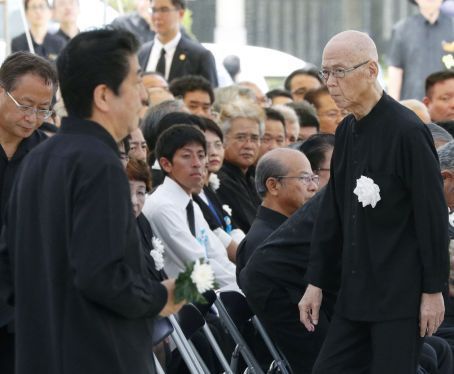
June 24, 2018 Ryukyu Shimpo
By Ryota Shimabukuro and Kenichi Yoshida
In Okinawa Governor Takeshi Onaga’s “Declaration of Peace” on “Irei no Hi,” signifying the 73rd anniversary of the end of World War II, the governor touched on the agreement to denuclearize the Korean Peninsula reached in the recent North Korea-U.S. summit, and renewed his demand that Japan rethink the new base facility construction in the Henoko district of Nago.
Prime Minister Shinzo Abe however, did not touch on the Henoko base construction issue in his address, but after the ceremony stressed to reporters that the relocation of MCAS Futenma would be a “reduction of burden [on the people of Okinawa].
” The Japanese government still plans to start land filling work in mid-August. Meanwhile, on June 22 Okinawa Prefecture had just sent the Okinawa Defense Bureau (ODB) an administrative guidance document demanding the cessation of construction.
On June 23, Abe indicated his intention that construction would continue, and with that “Irei no Hi” became the stage upon which the standoff between Okinawa and the Japanese government came into sharp focus.
According to people within the Okinawan government, the thing that the governor was particularly focused on for his “Declaration of Peace” was the activity pointing the Korean peninsula towards denuclearization.
Things have been moving quickly since the North Korean-U.S. summit on June 12, the U.S. has said that they would end the joint South Korean-U.S. military training exercises that North Korea criticized as “hostile,” and the U.S. has demanded that North Korea steadily continue to denuclearize.
In his declaration, Onaga criticized the continuation of construction at Henoko, saying, “It is not only the opposite of the easing of burden on Okinawa, it the opposite of the easing of tensions in Asia.” Okinawa’s top official further explained, “Even though the world is moving in this direction, why is the Japanese government refusing to change their stance and is continuing with base construction?”
At the memorial ceremony, Onaga commented, “My resolution to not allow the new base construction has not wavered in the slightest,” after which Okinawa Association of Bereaved Families chairman Tokumasa Miyagi said in his memorial statement, “As a descendant of the victims of war, I am vehemently opposed to both the desire to speed up the relocation of MCAS Futenma, as well as the construction of new base facilities which are connected to war,” which was met with thunderous applause. Many of the audience members were also descendants of the war dead.
The leader of the Liberal Democratic Party (LDP), which is the minority party in Okinawa, criticized Onaga’s declaration, saying, “Compared to last year, this year’s speech as too political. That type of speech is not suitable for a memorial ceremony.This needs to be addressed next week at the Okinawa Assembly.”
Meanwhile, a prefectural official stressed, “The governor has no intention of toning it down when it comes to Henoko. It is a display of his resolve.”
As the governor was strongly demanding that the Japanese government reconsider their construction plan at Henoko, Abe told reporters at a press conference, “Moving to Henoko will put the flight paths over the ocean, and aircraft will no longer be flying over schools or homes. This can be seen as both a safety measure and a reduction of the burden on Okinawa.”
Abe also stressed the government’s efforts to reduce the burden on Okinawan residents, noting the return of the West Futenma Housing Area as well as over half of the Northern Training Area (NTA), calling it the “largest return” of land since Okinawa was reverted to Japanese control.
However, Onaga countered with one particularly powerful statement in his declaration.
“Even 73 years after the end of the war, Okinawa, which accounts for no more than 0.6% of the total landmass of the country, continues to contain 70.3% of all U.S. military facilities in Japan.”
He stressed that the concentration of bases in Okinawa has not changed, and that it was clear there is a perception gap between Okinawa and the Japanese government on the meaning of “burden reduction.”
After the ceremony, a senior staff member of the prefectural governmen said, “There was just a stray bullet incident in Nago. The same things keep repeating in Okinawa. The Prime minister says, ‘We will be there for Okinawa,’ but the words do not reach our hearts.”
(English translation by T&CT and Sam Grieb)
Go to Japanese
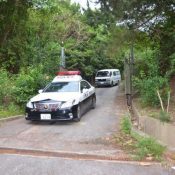
June 22, 2018 Ryukyu Shimpo online edition
On June 21 at about 2:00 p.m., an object resembling a bullet was reported found at a small work cabin in an orchard in Sukuta, Nago City. No one was injured, but two panes of glass in the cabin were damaged.
According to the property manager, a 44-year-old man of Nago City, the bullet-like object is about 5 centimeters long and 1.2 centimeters in diameter.
The object appears to have flown in from the southeast, breaking the glass of a sliding door, ricocheting off a wall, and hitting a high window in the cabin.
Sukuta is adjacent to Camp Schwab, where live-fire training is conducted.
Incidents involving stray bullets have occurred in Sukuta in the past.
The Prefectural Police are conducting an investigation and think that it is possible that on this occasion, too, it could be a U.S. military bullet.
The Nago Police found the bullet-like object took custody of it.
They will use the proper channels to appraise the object, and depending on the results, they plan to make inquiries about the object to the U.S. military.
The Okinawa Defense Bureau (ODB) notified surrounding cities, towns and villages, including Nago City that the military would be conducting live-fire training between June 18 and 24. As of June 22, the Prefectural Military Base Affairs Division has been moving to coordinate a visit to the site to verify the circumstances surrounding the object.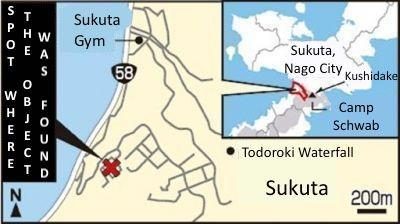
According to the property manager, on his way home after some work on June 21 around noon, he noticed some glass in the cabin was broken.
After searching the rooms, at around 2:02 p.m. he made his report.
At about 5:00 p.m. on the previous day, the property manager had been inside the cabin to do some cleaning and had not noticed anything unusual at that time.
The cabin is about large enough for five or six people to sit while on break or when sorting fruit.
The property manager said: “Routinely, [U.S. military] firing is audible. I think [the object] belongs to the U.S. military.
I thought this place was safe because [training] is controlled, but now I want to request that measures against the recurrence of such an incident be taken.”
In an interview with Ryukyu Shimpo, the Ministry of Defense’s ODB said that it is gathering information.
In 2002 in Sukuta, Nago City, a U.S. military M2 machine gun was fired at close range to a field where farm hands were working, and a stray bullet landed near workers in the field.
(English translation by T&CT and Erin Jones)
Go to Japanese
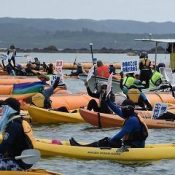
June 25, 2018 Ryukyu Shimpo online edition
A team of about 70 vibrantly colored citizens’ canoes face the Japan Coast Guard’s black inflatable boats, separated by an oil fence.
As a backdrop to the contrasting colors of the two sides, the “thuds” of the machinery steadily performing seawall construction resound.
On the morning of June 25 on the shore portion of Camp Scwab in Henoko, Nago City, citizens began their on-water protest. As a team, the 70-or-so canoes and 9 protest boats faced the shore, and those aboard called at length for base construction work to stop, fervently yelling things like, “cease illegal operations,” and “protect the coral.”
However, the Japan Coast Guard warned the protesters that they were conducting their protest in the temporary restricted zone.
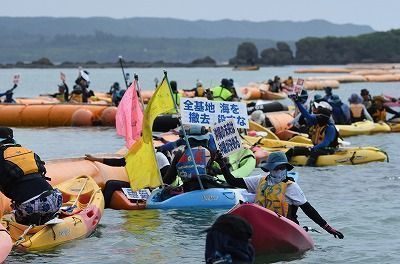
On June 25 at about 9:10 a.m. near the shore of Camp Schwab in Henoko, Nago City, citizens on the ocean protest construction of a new base in Henoko.
At about 9:30 a.m. the protest became tempestuous, and many protestors in canoes crossed the oil fence.
Many of the canoes were blocked by the Coast Guard’s boats and forced back onto the other side of the oil fence.
(English translation by T&CT and Erin Jones)
Go to Japanese
June 21, 2018 Ryukyu Shimpo
Higashi Village – The Higashi Village assembly in Okinawa (Toshiyuki Awa, Chairman) unanimously passed on June 20 a position statement and resolution demanding the immediate removal of two helipads in the N4 sector of the U.S. military’s Northern Training Area (NTA), which is located in Higashi.
In addition to the continued accidents involving U.S. military helicopters, the increase in helicopter training near the village has increased the sound damage experienced by village residents.
The village assembly passed a resolution in 2015 banning the use of the N4 helipad, however this is the first time they have demanded outright removal.
They also requested the cancelation of Osprey flights, as well as a fundamental revising of the Status of Forces Agreement (SOFA).
In July of 2014, two new helipads were constructed in sector N4, about 400 meters from a residential area in Takae.
Operations began in February of 2015, and was used as the takeoff and landing point for U.S. aircraft including the MV-22 Osprey.
Since February of 2017, the village assembly has been conducting a survey in the Takae district.
Based on the results of this survey, the resolution explains, “The aircraft often flies over private land, and bombards residents with thunderous noise.
This has been a daily torment for village residents. It is also evident that the training flights out of the N4 helipads are increasing.”
Additionally, it claims that the N4 district, “creates a situation in which residents live next door to danger. With the noise and low frequencies emanating from the Ospreys at takeoff, never knowing when the fuselage or parts of the helicopter will fall off, the residents live trembling in fear, increasing their torment.”
The resolution also touched on the accidents involving U.S. military aircraft, which has been piling up.
They identified the crash landing and fire of a CH-53E transport helicopter on private land in Takae in October of 2017, as well as the crash landings of MV-22 Ospreys in Nago City and in Australia, and also noted the numerous incidents of emergency landings and falling parts that occur both in Okinawa and elsewhere.
“Simply put, the aircraft being flown are faulty, and it plain to see that the U.S. military are negligent and arrogant with regards to their equipment maintenance,” the resolution harshly criticizes.
The resolution was sent to the U.S. Ambassador to Japan and the Okinawa Area Coordinator (OAC), and the position statement was sent to the prime minister and others.
Mayor Seikyu Iju, who accepted the construction of the helipad in the NTA, said in an interview with the Ryukyu Shimpo, “I am not in a position to comment on the resolution of the assembly.”
In 2017 after the crash of the CH-53E helicopter, Mayor Iju did demand that operations at the N4 helipads be stopped.
(English translation by T&CT and Sam Grieb)
Go to Japanese
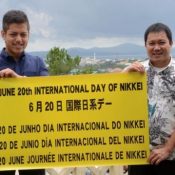
June 21, 2018 Ryukyu Shimpo
On June 6 and 7, the Association of Nikkei and Japanese Abroad held their 59th Convention of Nikkei and Japanese Abroad in Hawaii.
Here, the association established June 20 as International Day of Nikkei.
June 20 was the day in which Japanese first arrived in Hawaii as emigrants in 1868.
Second-generation Japanese-Argentinian Higa-Andreas and third-generation Japanese-Peruvian Tadashi Isa-Andreas, who both live in Nago City, proposed the establishment of the Nikkei Day.
They said that they were happy and that they hope that Nikkei people will take this opportunity to deepen cultural exchange with other Nikkei people from around the world.
The purpose of Nikkei Day is to establish one’s identity as Nikkei and to deepen cultural exchange with Nikkei people from around the world.
The abovementioned persons proposed the establishment of Nikkei Day to the Pan-American Nikkei Association (APN) and the APN Peru Chapter.
They supported the World Uchinanchu Day that was established in 2016 and strove to establish a Nikkei version. Isa said, “The Uchinanchu created the Uchinanchu Day and cherish their identity.
I wanted the Nikkei people around the world to also cherish their identity.”
During the declaration at the convention, June 20 was declared as the International Day of Nikkei to facilitate the link among the Nikkei people of the world and to further contribute to the international community.
Higa said, “I wanted to create Nikkei Day so the Nikkei people from around the world could come together as one. I’m happy we were able to make this happen.”
(English translation by T&CT and Chelsea Ashimine)
Go to Japanese
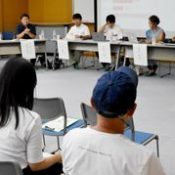
June 16, 2018 Ryukyu Shimpo
In May, Ishigaki City conducted an “Ishigaki-jima residents’ ideas survey on tourism” and reported the result.
In regard to the number of tourists to the city, 47.4% responded that, “the number should be reduced slightly” and “should be reduced,” exceeding the 35.1% who answered in support of the number being “maintained.”
Out of the respondents, 17.6% answered, “It should be increased slightly” and “should be increased.”
The results were reported on June 8 at the City Tourism Platform Conference held at the City Health and Welfare Center.
The survey was conducted on the internet, in a format asking that respondents select answers about matters such as the impact on life from tourist visits. May 1 through May 31 was the period over which the survey was conducted. The number of responses was 348.
To the multiple-choice question asking what difficulties come with the increasing number of tourists, most respondents answered that they, “worry about the natural environment” at 70.1% followed by “inconvenience during ordinary shopping” at 59.8%, and “congestion on public transportation” at 52.3%.
In response to the question, “What do you think is necessary for the city’s tourism promotion measures?”
62.1% answered “conservation of the natural environment,” 30.5% answered “improvement to the appeal of things such as the landscape,” and 30.5% said “improvements to facilities and infrastructure.” These accounted for the top responses.
Based on the results of the questionnaire, the Conference held discussions with representatives from tourism, transportation, and nature conservation organizations.
Panelists pointed out the necessity of promoting conservation of the natural environment for sustainable tourism, and to generate charm on the island to avoid the decrease of repeat visitors.
City Tourism Advisor Masakazu Taniguchi made a keynote lecture on “Lessons from the World on Designing Charming Cities.”
(English translation by T&CT and Megumi Chibana)
Go to Japanese
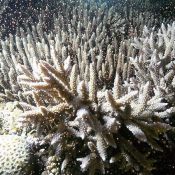
June 2, 2018 Ryukyu Shimpo
Coral in Oura Bay in Nago city showed signs of spawning on May 30 at the construction site of a new military base meant to replace MCAS Futenma. Pink-colored eggs drifted in the water, creating a mysterious scene. The following photos show the scenes of spawning.
(English translation by T&CT and Sayaka Sakuma)
Go To Japanese
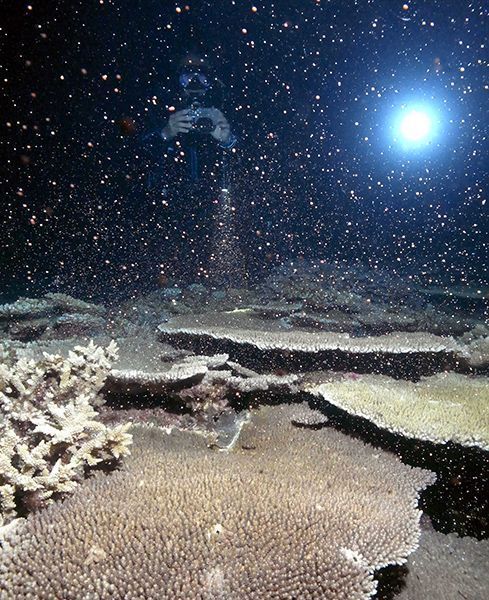
A type of staghorn coral lays numerous eggs
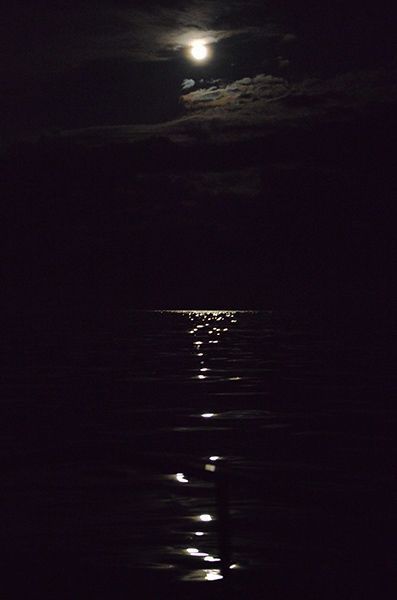
Staghorn coral lay eggs during the spring tides between May and June. The moon shines on the surface of the water
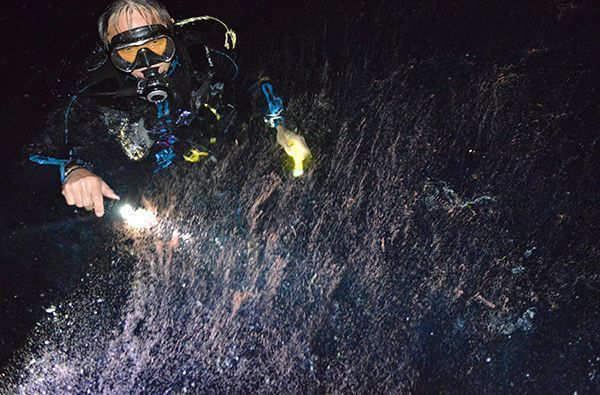
The ocean surface is covered by a pink egg-carpet after spawning
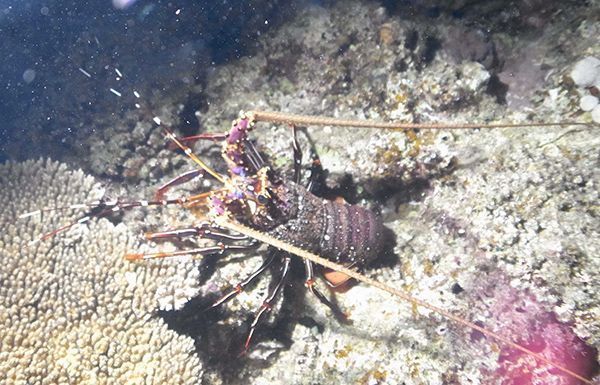
Species like lobster come out from the coral after dark

June 8, 2018 Ryukyu Shimpo
At the “Ryudai 21st Century Forum” held recently at the University of the Ryukyus in Nishihara Town as a place of interaction between academia and society attended by students and employees of various companies, Emi Tamaki, Associate Professor at Waseda University’s Graduate School of Creative Science and Engineering, addressed a packed room filled with raptly listening teachers, students, and other attendees.
She talked about her “three-legged life,” which includes her research in “Body Sharing” technology – which uses a computer to help people move their bodies, managing a company, and teaching.
The term Body Sharing was coined by Tamaki. Tamaki, who “didn’t like to go out and is a homebody,” conceived of a system that would send out a robot or another person in their place and would allow them to share the sensations of various experiences, that would include not only sound and sight, but also touch and feel.
In 2011 while at Tokyo University Graduate School, Tamaki debuted her “possessed hand,” which used a computer to move the hand of a person with hyposthenia.
She then studied using a computer to send electric signals to move muscles, and shocked the world after developing a system that used that technology to move fingers via electrodes attached to a person’s forearm, and started receiving a lot of requests to use the technology.
To put this into mass production, Tamaki founded the company H2L with a friend in 2012. In order to get her company off the ground, she started looking for partnerships with manufacturers, continuing her research while splitting the workload with her friend, and in order to increase her business opportunities started attending studying up on international affairs and business practices, and attending workshops.
While her goal was to share the human body experience, there were many people who are hesitant. Wondering where this would fit the needs of and be accepted into society, her focus was drawn to virtual reality gaming.
She released a well-received stress reliever game called “Mother Madness” where, using a controller that looked like a watch, the player would move their arm and on screen the mother would destroy objects in a house, with the player seeing how much damage they can do.
Currently, Tamaki continues to research the dangers and psychology of operating in a virtual world, looking to develop and promote new things.
She gave a shout out to the students in attendance, saying, “Whether you are in Okinawa, Tokyo, or anywhere else, as long as you have a vision, the only thing left is to try.”
(English translation by T&CT and Sam Grieb)
Go to Japanese
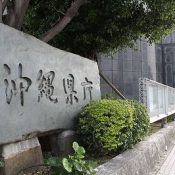
June 15, 2018 Ryukyu Shimpo
By Ryota Shimabukuro
On June 14, it came to light that a prefectural referendum could take place, which might throw the certainty of land reclamation in Henoko into question.
If the referendum is held it will be after the Okinawa gubernatorial election in November.
Once the Okinawa Prefectural Government (OPG) completes its required administrative procedures for the referendum, at soonest it could be conducted in December of this year.
During his current term of office Governor of Okinawa Takeshi Onaga announced his intention to revoke the land reclamation permit.
His reasoning appears to be unrelated to the prefectural referendum that may take place after the upcoming gubernatorial election, but rather based in matters such as the deficiencies of environmental conservation policy.
The Japanese government informed the OPG that depositing soil into the ocean as part of land reclamation work will begin on August 17.
Governor Onaga has put off specifying definitively why or when he plans to revoke the land reclamation permit.
Hypothetically, revocation of the land reclamation permit could happen in one of two ways, either based on environmental conservation, or based on public interest shown through the results of a prefectural referendum.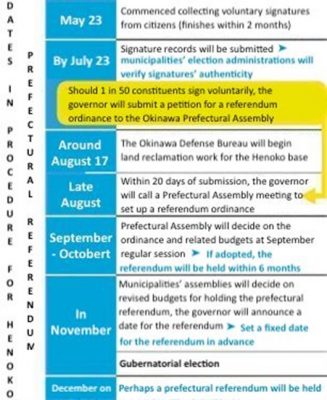
On June 12, Governor Onaga spoke about signatures being collected from constituents requesting that a referendum ordinance be enacted.
He assessed that a prefectural referendum, “will be able to clearly demonstrate the intentions of each citizen.”
However, in regard to revoking the land reclamation permit, Onaga said, “I am not restrained by the timing or results of the prefectural referendum. If it comes to a point that we cannot overlook environmental conservation measures or other matters, I will certainly revoke [the permit] without hesitation.”
Perhaps Onaga made this statement in consideration of the fact that the prefectural referendum will be held only after the gubernatorial election.
Signature collection for the prefectural referendum began on May 23.
If one-fiftieth of eligible voters sign (equaling about 23,000 signatures) within two months, then the governor has twenty days to submit a petition for a referendum ordinance and a draft budget.
According to an OPG official, it is unclear whether the governor will be able to submit the petition and draft budget to the Okinawa Prefectural Assembly at its regular meeting in September due to the time required to validate the signatures.
The OPG is also requesting that municipalities operate the polling places and tally up results.
It is considering a method by which to pay grants to the municipilities, and it will also take time for the city assemblies, town councils, and village assemblies to decide on revised budgets.
Once this takes place, the governor will notify the public of the date of the prefectural referendum.
Since it is important to make the time period common knowledge before preparing a fixed date, the referendum is scheduled to take place after the gubernatorial election.
(English translation by T&CT and Erin Jones)
Go to Japanese
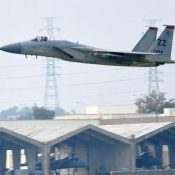
June 15, 2018 Ryukyu Shimpo
On June 16, the Okinawa Prefectural Government (OPG) revealed that when it called to lodge an objection about the crash of an F-15 fighter aircraft stationed at the United States Air Force Kadena Air Base, the 18th Air Wing of Kadena Base asked that the OPG make contact through the Japanese government.
After that, the OPG made clear its intention to go to the base and lodge its objection, and now it is coordinating a date with the U.S. military.
It is unusual for the U.S. forces to request communication through the Japanese government.
On June 11 when the F-15 crashed, the OPG requested that the 18th Air Wing come to the Prefectural Office.
At that time, the U.S. military asked that communication take place “through the Okinawa Defense Bureau.”
The OPG requested that the Defense Bureau coordinate a schedule, but a Defense Bureau official said that there was no precedent for such action.
Once more, the OPG requested that the 18th Air Wing receive a visit from prefectural government officials to receive their protest.
On June 15, the 18th Air Wing answered that they would accommodate the request.
Defense Minister Itsunori Onodera explained at a press conference on June 15 that he received report of a miscommunication.
(English translation by T&CT and Megumi Chibana)
Go to Japanese
June 13, 2018 Ryukyu Shimpo
Nago – For the first time since taking office, Mayor Taketoyo Toguchi acknowledged that base construction in Henoko was progressing on June 12, commenting, “I believe that it is progressing with attention being paid to the environment, and I definitely would like it to continue as such,” after being notified by Okinawa Prefecture about land-filling in Oura Bay.
Furthermore, he stressed that the facility construction at Henoko was not within city jurisdiction, stating, “The construction, which has been deemed legal, is not something that can be stopped by the authority of Nago City.”
During the election, Mayor Toguchi did not take a stance one way or the other regarding the hotly contested base construction issue, saying only that he would, “keep a close eye on the legal proceedings between Okinawa and the Japanese government.”
Prior to the Okinawa Defense Bureau’s (ODB) notice to the Okinawa prefectural government that land filling had begun, Toguchi commented, “Starting with the ODB, who issued the notice, I would like to respond properly and in accordance with the law.”
It seems that on June 12, Mayor Toguchi had been notified about the August-scheduled land filling by the ODB first, rather than the government of Okinawa.
(English traslation by T&CT and Sam Grieb)
Go to Japanese
















 Webcam(Kokusai Street)
Webcam(Kokusai Street)


